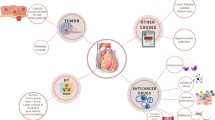Opinion statement
Pericardial mesothelioma is a rare cancer for which treatment options are limited. Operative intervention in pericardial mesothelioma is primarily for effusion control, for cytoreduction before multimodal therapy, or to deliver and monitor innovative intrapericardial therapies. Misdiagnosis is common. Early detection of the disease is the only hope for survival. Echocardiography, pathologic examination of pericardial fluid and pericardial biopsy, Gallium-67 scintigraph, Ber-EP4 antibody, and immunohistochemical procedures can be used. Magnetic resonance imaging is emerging as the best modality for demonstrating the nature and extent of the constrictive process, and the infiltration to the cardiac wall and great vessels. Failure of surgical techniques is usually associated with mesothelioma with entrapped heart, a large solid tumor mass, and a long history of pericardial effusion. If the tumor is localized, resection is the only hope for this rare, but lethal, entity. No single treatment modality is efficient by itself. The exact role of intracavitary chemotherapy or irradiation remains to be defined. Preliminary clinical application of photodynamic therapy and attempts at inhibiting the effects of growth factors, such as vascular endothelial growth factor and platelet-derived growth factor, and vaccine treatments are being explored. Adenoviral molecular chemotherapy recently completed phase I testing. Clinical trials for pleural mesothelioma remain important as clinicians seek to improve the outcome for patients with pericardial mesothelioma. Early diagnosis and multidisciplinary patient care is essential for improved surgical outcome. In the future, combined therapeutic strategies involving radical surgery, radiotherapy, adjuvant chemotherapy, and immunomodulation may have a role in the treatment of pericardial mesotheliomas.
Similar content being viewed by others
References and Recommended Reading
Pass HI, Robinson BW, Testa JR, Carbone M: Emerging translational therapies for mesothelioma. Chest 1999, 116:455S-460S.
Krismann M, Muller KM: [Malignant mesothelioma of the pleura, pericardium and peritoneum, 1: etiology, pathogenesis, pathology. Chirurg 2000, 71: 877–886.
Kralstein J, Frishman W: Malignant pericardial diseases: diagnosis and treatment. Am Heart J 1987, 113: 785–790.
Warren WH: The clinical manifestations and diagnosis of mesothelioma. In Mesothelioma: Diagnosis and Management. Edited by Kittle CF. Chicago: Year Book; 1987:31.
Van De Water JM, Allen WA: Pericardial mesothelioma. Ann Thorac Surg 1967, 3:162–165.
Quinn DW, Qureshi F, Mitchell IM: Pericardial mesothelioma: the diagnostic dilemma of misleading images. Ann Thorac Surg 2000, 69:1926–1927.
Watanabe A, Sakata J, Kawamura H, et al.: Primary pericardial mesothelioma presenting as constrictive pericarditis: a case report. Jpn Circ J 2000, 64:385–388.
Watanabe M, Suzuki H, Fukutome K, et al.: An autopsy case of a malignant pericardial mesothelioma in a Japanese young man. Pathol Int 1999, 49:658–662.
Chun PK, Leeburg WT, Coggin JT, Zajtchuk R: Primary pericardial malignant epithelioid mesothelioma causing acute myocardial infarction. Chest 1980, 77:559–561.
Nambiar CA, Tareif HE, Kishore KU, et al.: Primary pericardial mesothelioma: one-year event-free survival. Am Heart J 1992, 124:802–803.
Sane AC, Roggli VL: Curative resection of a well-differentiated papillary mesothelioma of the peri-cardium. Arch Pathol Lab Med 1995, 119:266–267.
Steinberg I: Angiocardiography in mesothelioma of the pericardium. Am J Roentgenol Radium Ther Nucl Med 1972, 114: 817–821.
Thomason R, Schlegel W, Lucca M, et al.: Primary malignant mesothelioma of the pericardium: case report and literature review. Tex Heart Inst J 1994, 21: 170–174.
Dodson RF, O’Sullivan M, Corn CJ, et al.: Analysis of asbestos fiber burden in lung tissue from mesothelioma patients. Ultrastruct Pathol 1997, 21: 321–336.
Antman KH, Corson JM, Li FP, et al.: Malignant mesothelioma following radiation exposure. J Clin Oncol 1983, 1:695–700.
Velissaris TJ, Tang AT, Millward-Sadler GH, et al.: Pericardial mesothelioma following mantle field radio-therapy. J Cardiovasc Surg (Torino) 2001, 42:425–427.
Maher EA, Shepherd FA, Todd TJ: Pericardial sclerosis as the primary management of malignant pericardial effusion and cardiac tamponade. J Thorac Cardiovasc Surg 1996, 112: 637–643.
Fizazi K, John WJ, Vogelzang NJ: The emerging role of antifolates in the treatment of malignant pleural mesothelioma. Semin Oncol 2002, 29:77–81.
Rubins JB, Greatens T, Kratzke RA, et al.: Lovastatin induces apoptosis in malignant mesothelioma cells. Am J Respir Crit Care Med 1998, 157:1616–1622.
Carbone M, Rizzo P, Pass H: Simian virus 40: the link with human malignant mesothelioma is well established. Anticancer Res 2000, 20:875–877.
Shivapurkar N, Wiethege T, Wistuba II, et al.: Presence of simian virus 40 sequences in malignant mesotheliomas and mesothelial cell proliferations. J Cell Biochem 1999, 76:181–188.
Carbone M, Fisher S, Powers A, et al.: New molecular and epidemiological issues in mesothelioma: role of SV40. J Cell Physiol 1999, 180:167–172.
Hubner R, Van ME: Reappraisal of the strong association between simian virus 40 and human malignant mesothelioma of the pleura [Belgium]. Cancer Causes Control 2002, 13:121–129.
Imperiale MJ, Pass HI, Sanda MG: Prospects for an SV40 vaccine. Semin Cancer Biol 2001, 11: 81–85.
Catalano A, Romano M, Martinotti S, Procopio A: Enhanced expression of vascular endothelial growth factor (VEGF) plays a critical role in the tumor progression potential induced by simian virus 40 large T antigen. Oncogene 2002, 21: 2896–2900.
Nowak AK, Lake RA, Kindler HL, Robinson BW: New approaches for mesothelioma: biologics, vaccines, gene therapy, and other novel agents. Semin Oncol 2002, 29:82–96.
Author information
Authors and Affiliations
Rights and permissions
About this article
Cite this article
Eren, N.T., Akar, A.R. primary pericardial mesothelioma. Curr. Treat. Options in Oncol. 3, 369–373 (2002). https://doi.org/10.1007/s11864-002-0002-7
Issue Date:
DOI: https://doi.org/10.1007/s11864-002-0002-7




